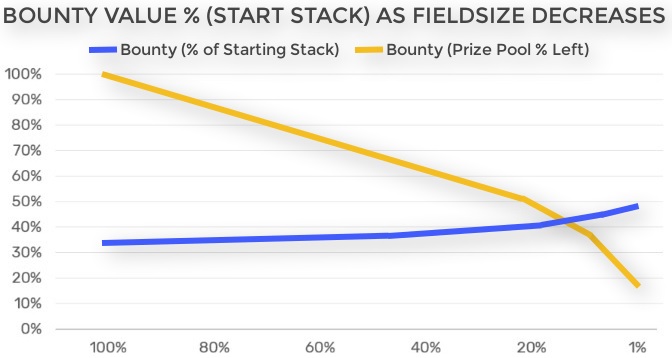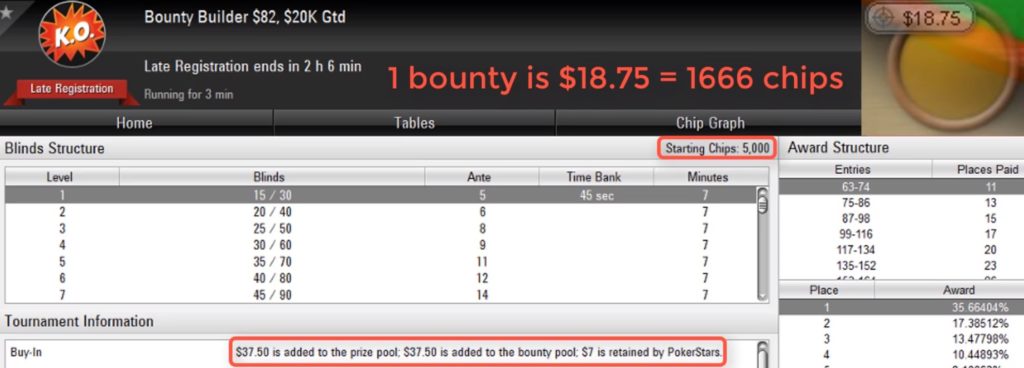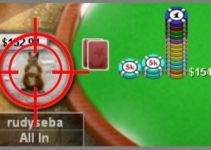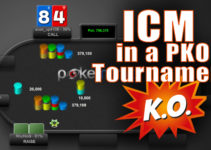The popularity of Progressive Knockout Tournaments is at an all-time high. A bounty reward for busting a player creates a fun dynamic from the get-go. And as bounties accumulate, (resulting in bigger knockout prizes) the fun is amplified.
This lures in a lot of recreational players who otherwise might have found the pace of MTTs a bit slow, especially in the early stages. This, in turn, results in the semi-pros and pros diving into the action looking to get some value.
Here's the thing. Most grinders simply use regular format MTT play with a few adjustments to account for the bounties and find they can earn a decent profit in PKO tournaments.
This is a huge pitfall for most regulars who have the mindset "Why study the PKO format if I'm already winning?". This leads to a reluctance to learn optimal PKO strategy, which is great news for you reading this article!
Currently, PKO tournaments represent an incredible opportunity. Those willing to learn the correct PKO strategy will be able to join tournament fields with a high percentage of recreational players and a handful of regulars who are using mediocre PKO strategy! Times have never been better for online tournament poker!
So now let's take a look at the right way to approach PKO tournaments. Use the right winning strategies and crush the competition!

That's the first question players ask when it comes to adjusting to the bounty reward.

The best way to approach factoring in the bounty is to assign it a chip value. This allows players to make MTT calculations they are familiar with. Somewhat similar to how you would confront different opponent bet sizes, you can alter your decision according to the size of a player's bounty. Let's see exactly how to do this.
Factoring in the Bounty in a PKO MTT
In a regular PKO, a player's start bounty is worth 1/3 of the tournament start stack amount. The following video explains this relatively easy calculation and the effect it has on decision making. It's taken from PokerNerve's Bounty Hunter Course.
One minute into the course, the 1/3 start stack rule is already introduced which is appropriate for standard PKO tournaments. From there, the course goes deeper and deeper into the important strategic adjustments and introduces fast, easy in-game formulas such as bounty factor and equity drop to make calculations a breeze on the fly.
Here's the introduction part of the course, check it out.
[embedyt] https://youtu.be/Z-GfH5GCoHc[/embedyt]
This video really highlights the importance of understanding the bounty impact in a knockout tournament. We see by assigning bounties a chip value it helps to factor in the bounties when facing an all-in with a knockout on the line. Let's see a simple example.
PKO calculation Example
It’s the beginning of the PKO with 5,000 start stacks. A short stack with a starting bounty shoves all-in for 1,500 chips. What is the value of the bounty in chips?
We said a starting bounty is worth 33% of a start stack, so that would be 1,666 chips. When considering calling the all-in we need to factor this in. The pot odds would dramatically change. The bounty in this spot is worth even more than the chips in the player's stack so we'll be able to call significantly wider.
If you're unsure of how to calculate pot odds in a regular format MTT, you might want to read this article Pot Odds & Implied Odds Explained, to get the hang of it.
PKO Bounty Formula
Thinking of a start bounty as 1/3 of a start stack helps us gain perspective over the adjustments we need to be making at the start of a PKO tournament. If you used this system throughout the tournament. you wouldn’t be too far off. However, the final correct formula as discussed in the previous video looks like this.

While this may look a little technical at first, what we are really seeing this formula do is account for the amount paid into the bounty prize pool compared to the regular prize pool, AND the amount of the bounty prize pool remaining for the stage of the tournament.
A trend to be aware of is that as the tournament reaches the mid-to-late stage, we need to increase a bounty's value a little.

This is due to the nature of PKO tournaments. More and more of the bounty prize pool is being awarded to players as they bust opponents. This reduces the bounty prize pool amount left to play for and results in off-setting the value of a start bounty.
A good way of thinking about it is that this makes it a little more valuable to get a share of that diminishing bounty prize pool. This is not to mention we also get to scoop our own bounty if we win the tournament (i.e. all the accumulated bounties we’ve collected along the way in our bounty purse). This obviously becomes more of a possibility as we reach the final stages of an MTT.
You can get the sheet you can use to estimate the value of a start bounty by clicking here. This sheet estimates the amount of the bounty prize pool typically left based on the number of players remaining in the tournament. By using this sheet combined with the formula taught above, you'll always be able to accurately account for the ever-increasing bounty 'worth' as the tournament progresses.
So let’s see how we can now use this bounty formula and the sheet data to solve a common PKO scenario. We recommend pausing the video as needed to do the calculation yourself.
[embedyt] https://www.youtube.com/watch?v=VkYtIC2r8Bk[/embedyt]
A good practice is to take a mental note of the start stack and start bounty amounts displayed in the tournament lobby at the beginning of the tournament. This is your calculation reference points so you're prepared to deal with situations as they appear.

As shown in the previous video, we can convert the number of start bounties an all-in player has into a chip value, and add it to the pot to reflect the adjusted pot odds required to make a call profitable.
At the early stage using 1/3 of a start stack is fine, but adjusting to the shift in the bounty prize pool is the way to go as the tournament starts getting closer to the middle stage.

This calculation is the tip of the iceberg. Yet it's amazing how many players are still using something like 50% of a start stack to factor in a bounty. Most people just want to get by with their MTT knowledge and perhaps some bad advice they've heard or read.
Even sites like Run It Once were calculating a start bounty as 50% of a start stack in their late 2019 MTT instructional videos, leading to a lot of missteps in their tutelage.
The poker community has sure been slow getting accustomed to knockout poker. So it's worth spending some time on PKO tournament formats to take advantage of the player pool mistakes as it will really pay off on the felt.

The Key Factors in a Progressive Knockout Tournament
PKO tournaments will have a range of confrontations where bounties will drastically influence the decision. Along with the regular MTT considerations like stack size, adjusting to players, player types, ICM and so forth, we've learned other key factors play a role in PKO tournaments. Including;
♠ Start stack amount
♠ Number of start bounties
♠ Stage of the tournament
If you're reading this and still unsure of a solid regular tournament strategy and getting lost, you can find an article to help you improve your game here.
For those with some tournament experience but still relatively new to PKO play, here's a handy method to become familiar with how much to loosen up for KO opportunities at the start of a tournament.
For accurate decision making in the early stages of a bounty tournament, familiarize yourself with all-in confrontations versus varying start stack percentages.
Since players will usually have 1 start bounty and be hovering somewhere close to 1 start stack at the beginning of an MTT, simply thinking what hands can call or isolate versus a 20% start stack, or 40% start stack, and so on, is useful.

Obviously, it's important to take into account player ranges as well, but this process helps make early-stage play relatively simple. Although some of you reading this won't yet have studied PokerNerve's Bounty Hunter Course, feel free to have a go at the early stage quiz from the course. Test your PKO skill!
Thanks for reading this article I hope it helps you win your next PKO!



